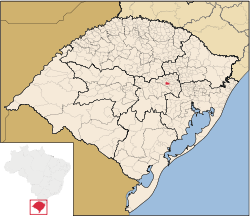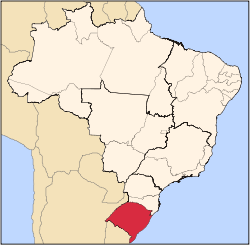This article relies largely or entirely on a single source .(April 2020) |
Forquetinha | |
|---|---|
 Location within Rio Grande do Sul | |
| Coordinates: 29°22′55″S52°05′27″W / 29.38194°S 52.09083°W | |
| Country | |
| State | Rio Grande do Sul |
| Population (2022 [1] ) | |
• Total | 2,393 |
| Time zone | UTC−3 (BRT) |
Forquetinha is a municipality in the state of Rio Grande do Sul, Brazil. It was raised to municipality status in 1996, the area being taken out of the municipality of Lajeado. [2]




